Hairy willow-herb identification and control
Information about the noxious weed hairy willow-herb. Hairy willow-herb is also known by its Latin name, Epilobium hirsutum.
About this weed
Hairy willow-herb is a regulated Class B noxious weed in King County. This means control is required in King County under the state noxious weed law. Hairy willow-herb is also on the Washington quarantine list meaning it is illegal to buy, sell, or offer it for sale in the state.
Hairy willow-herb is known as Epilobium hirsutum and it is in the evening primrose family. It is also sometimes called great willowherb and is a Eurasian relative of our native fireweed.
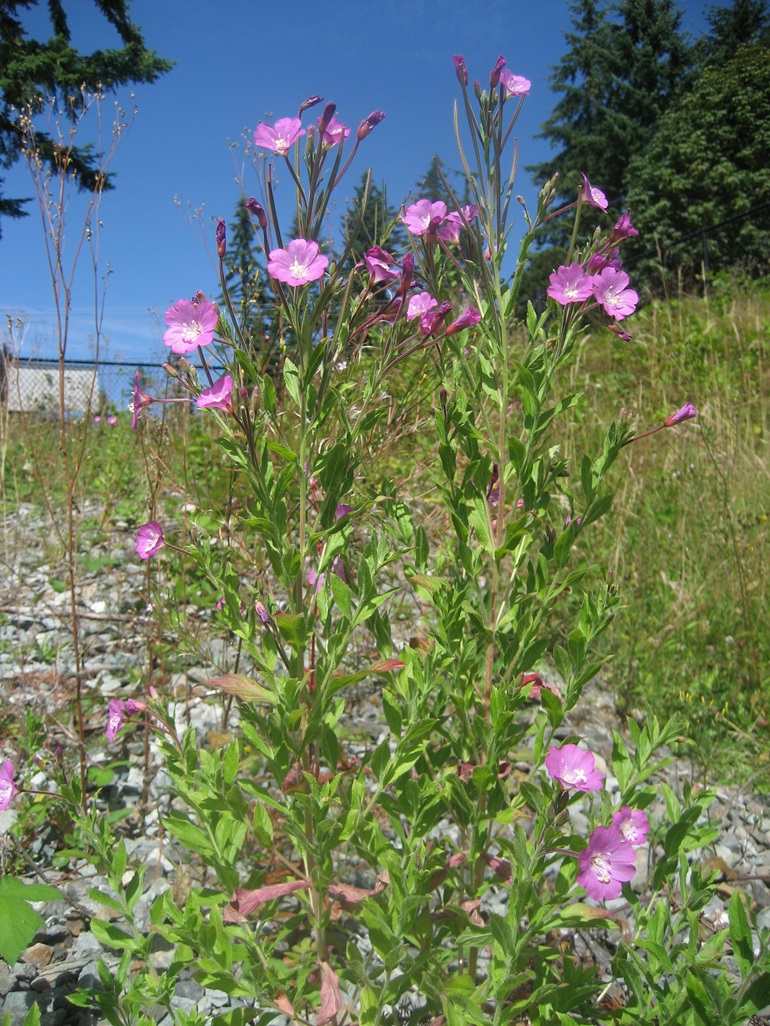
Why it's a problem
Hairy willow-herb has been introduced to areas in the northeast United States and some locations in Washington. This plant spreads quickly by seed as well as rhizomes (horizontal roots that sprout new plants) and can form dense stands crowding out other plants. Like purple loosestrife, hairy willow-herb thrives in moist areas and can degrade these habitats in much the same way. Sites include shorelines, low pastures, ditches, wetlands, and stream banks.
Plant description
Hairy willow-herb is a semi-aquatic perennial herb covered with soft hairs. It can grow up to 6 feet tall on erect and branching stems. The leaves are opposite (connect to the stem in pairs), lance-shaped with toothed edges, and attach directly to the stem. It has pink-purple flowers with white centers and notched petals. Flowering occurs from July to August. The seed pods are long and narrow and split open to release numerous seeds with long white hairs.
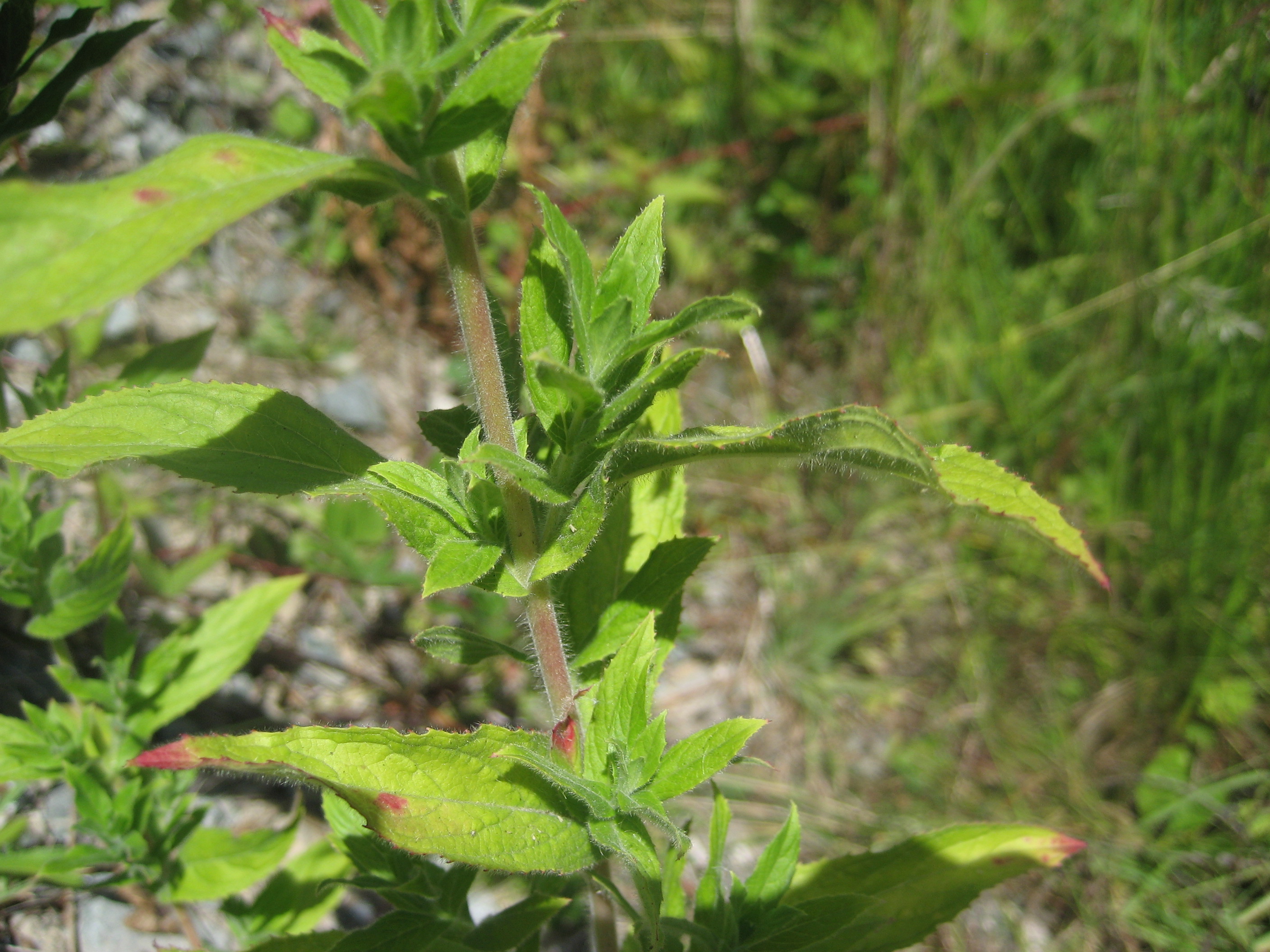
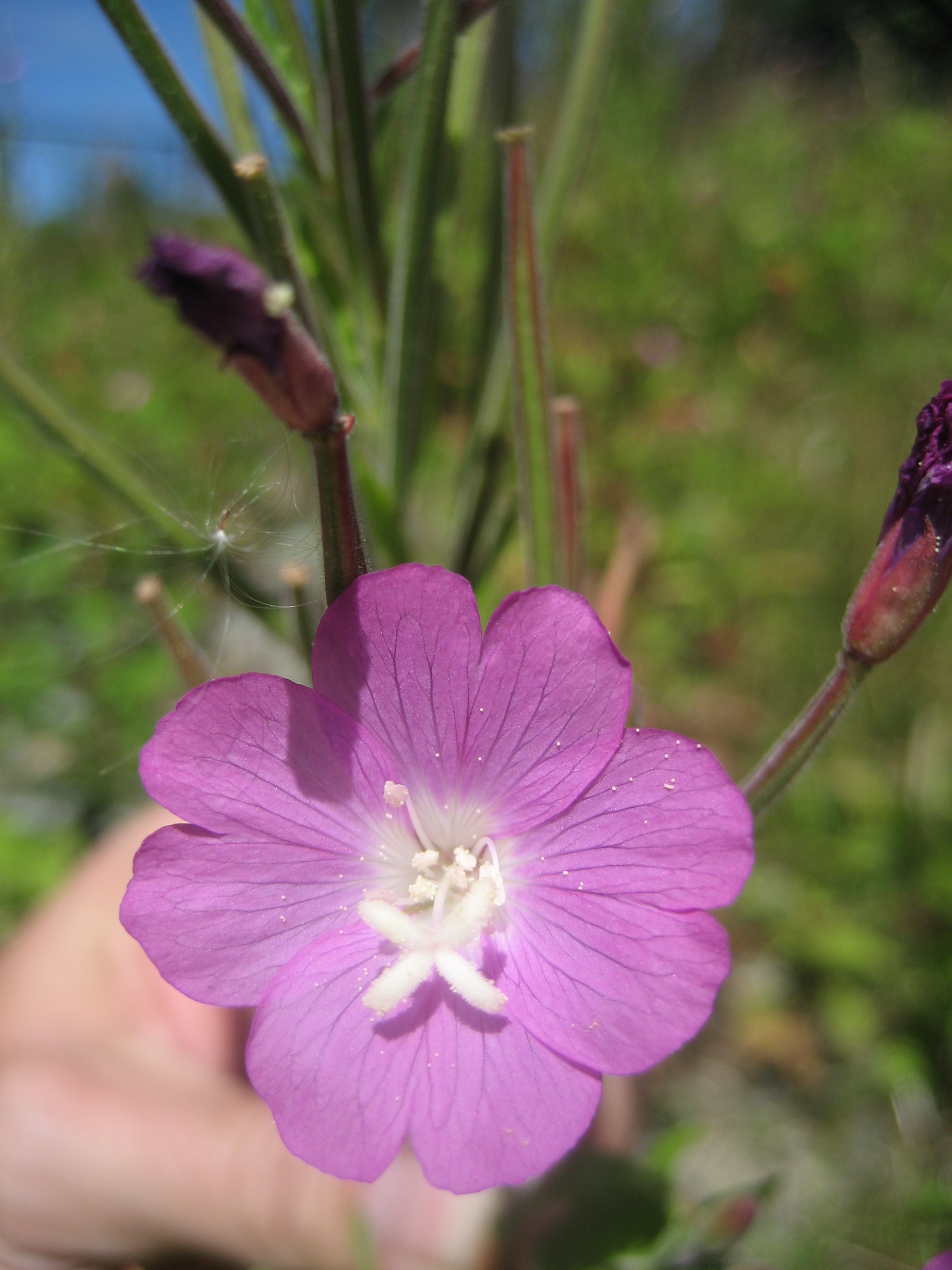
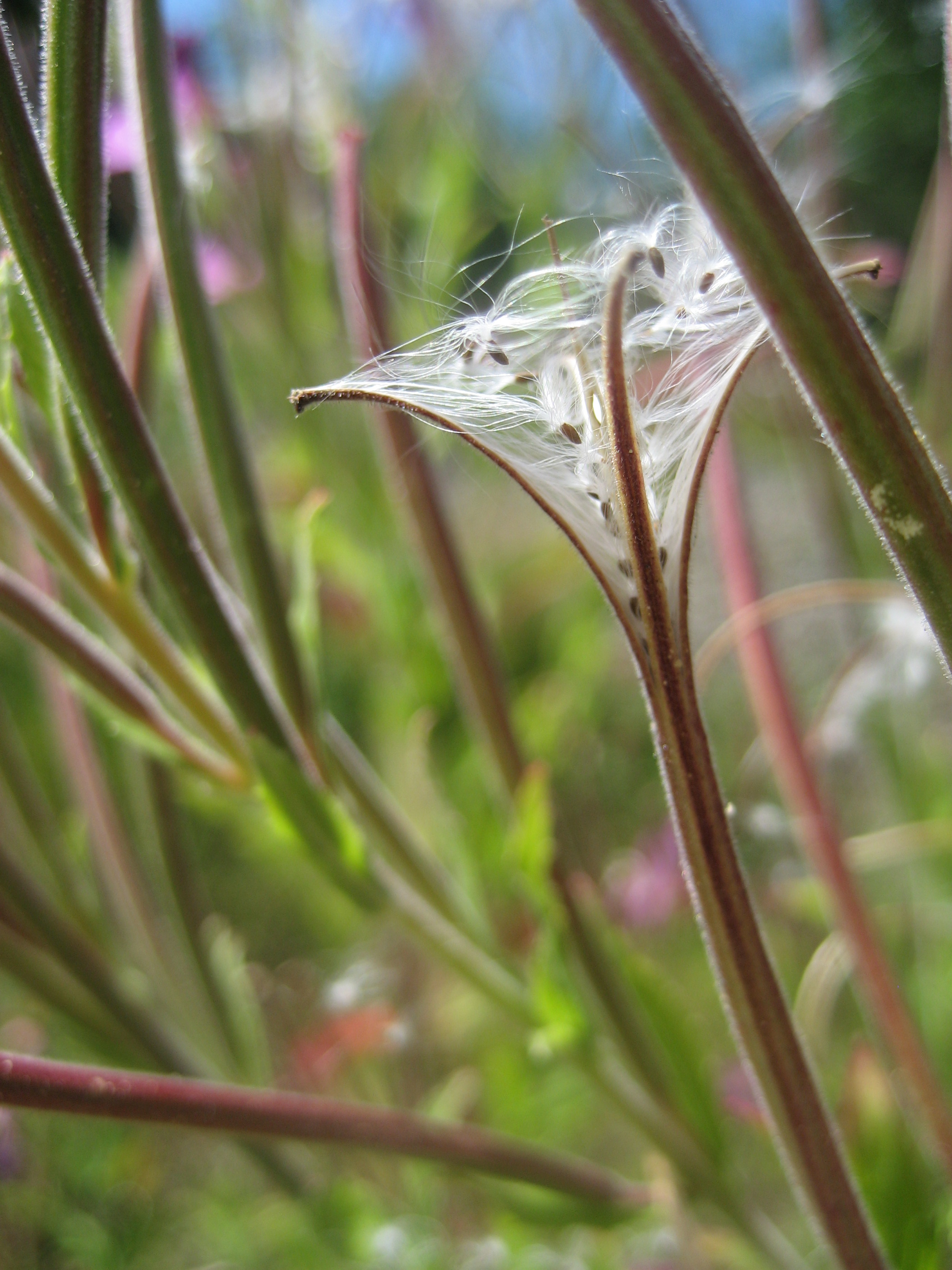
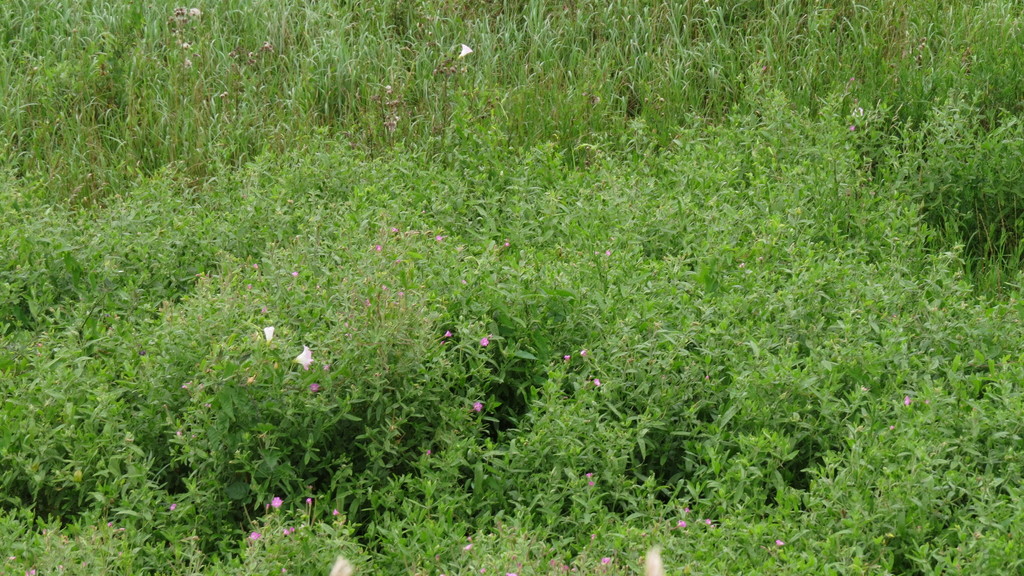
Be aware of look-alike plants
Native fireweed is in the same family as hairy willow-herb and resembles it. Leaves of fireweed are arranged alternately (grow staggered, without a pair on the stem) instead of opposite, and have smooth leaf edges instead of toothed like hairy willow-herb.
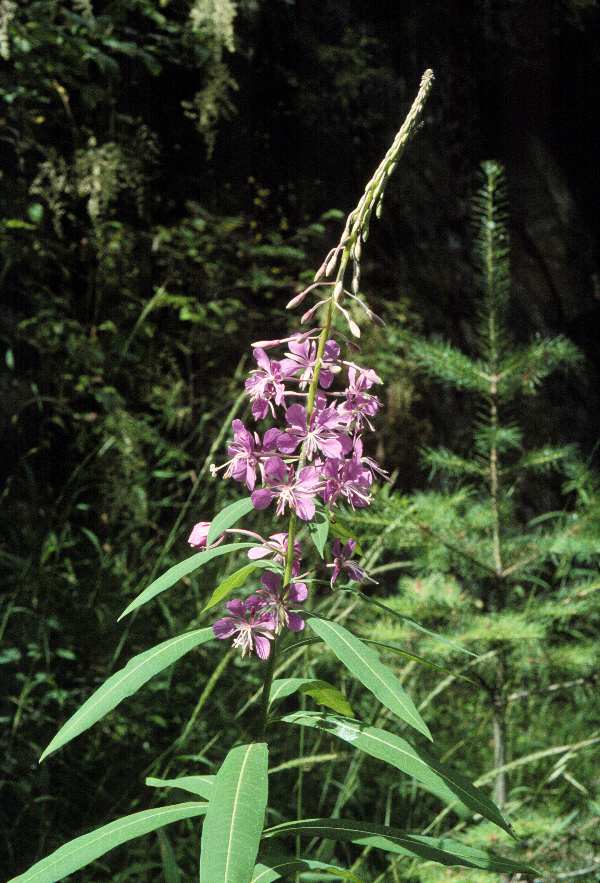
There are also some native Epilobium species like Watson’s willow-herb found in wet areas. They will have smaller inconspicuous flowers.
Native plant Watson’s willow-herb
Purple loosestrife is another noxious weed that resembles hairy willow-herb and can be found in the same wet sites.
When in doubt, take photos and share them with us or report them on iNaturalist.
What to do if you find it
Property owners are required to control hairy willow-herb on lands that they manage. In King County, hairy willow-herb is only found in a few locations, so we are working to keep it from spreading. Please notify us if you see hairy willow-herb growing in King County. Our program staff can provide the property owner or appropriate public agency with site-specific advice on how best to remove it. We map all known locations of regulated noxious weeds to help us and others locate new infestations in time to control them.
Control methods
In areas with few weeds, it is important to act quickly before they become harder to control. Make a long-term plan as it often takes several years to get rid of most weeds. Start in the least infested areas first and then move into more heavily infested areas. To reduce costs and environmental impacts, please consider a combination of methods.
Manual Control
Small infestations can be dug up. Make sure to remove all roots and rhizomes (root system that spreads outwards and can grow new stems) to prevent plants from re-sprouting. Bag and dispose of all plant material in the garbage, not compost. If plants have seeds they will spread easily if disturbed, so place a bag over the plant and cut the stems before removing the roots.
Chemical Control
For larger infestations, chemical control may be more cost-effective than manual removal. However, in wet areas, only state-approved aquatic herbicides can be used, and state and local permits will probably be needed. See Washington Department of Ecology Aquatic Pesticide Permits for details.
For specific chemical recommendations, please refer to the PNW Weed Management Handbook.
Disposal instructions
Dispose of all plant parts in garbage. If plant is seeding, be very careful not to spread seeds. Due to the highly invasive nature of hairy willow-herb, composting is not recommended.
Washington State Noxious Weed Control Board pamphlet on noxious weed disposal

 Translate
Translate